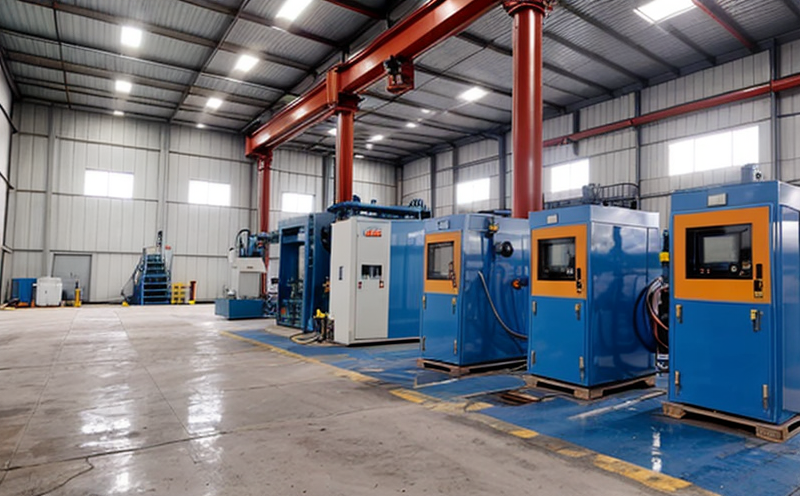ASTM C114 Chemical Analysis of Hydraulic Cement in Industrial Minerals Testing
The ASTM C114 standard is a crucial method used to determine the chemical composition and purity of hydraulic cements, which are widely utilized in various industrial minerals testing applications. This test is particularly important for ensuring that cement meets specified chemical requirements set by international standards such as ASTM C150. The process involves precise analysis using standardized methods to identify key constituents like calcium oxide (CaO), magnesium oxide (MgO), sulfur trioxide (SO3), and other minor elements.
The significance of this test lies in its role within the broader context of industrial minerals testing, where accurate chemical composition is essential for ensuring product quality and compliance with regulatory requirements. In industries such as construction, mining, and manufacturing, the reliability of hydraulic cement can directly impact project outcomes and safety standards.
Standardized methods like ASTM C114 provide a consistent approach to measuring these critical parameters, reducing variability in results across different laboratories or testing facilities. This ensures that manufacturers and end-users have confidence in the integrity and performance of their materials. Additionally, by adhering to international standards such as ISO 9001 for quality management systems, companies can further enhance trustworthiness and meet global market demands.
The process typically begins with sample preparation, which involves crushing and sieving industrial minerals according to ASTM C792 guidelines. Once prepared, the samples undergo chemical analysis using techniques like X-ray fluorescence (XRF) or atomic absorption spectroscopy (AAS). These instruments allow for precise quantification of elemental content, providing detailed information about the cement’s composition.
Results from these analyses are then compared against specified limits outlined in ASTM C150 to determine compliance. Non-compliance may indicate potential issues with raw material sourcing or processing methods that need addressing. By maintaining strict adherence to these standards throughout production processes, manufacturers can ensure consistent product quality and meet customer expectations.
It is worth noting that while ASTM C114 focuses primarily on hydraulic cements, its principles extend beyond just this type of cement into other areas related to industrial minerals testing. For instance, similar analytical techniques could be applied to assess the chemical content of aggregates or supplementary cementitious materials used in concrete production.
In conclusion, understanding and implementing ASTM C114 is vital for any organization involved in industrial minerals testing. Through rigorous adherence to this standard, businesses can enhance their reputation by producing reliable products that meet global quality standards while also fostering trust among stakeholders.
Why It Matters
The importance of ASTM C114 chemical analysis cannot be overstated in the realm of industrial minerals testing. Accurate determination of hydraulic cement's chemical composition ensures that construction materials perform optimally under various environmental conditions, thereby enhancing structural integrity and durability.
- Enhanced Durability: Understanding the precise chemical makeup allows for better prediction of how the material will behave over time, especially in harsh environments.
- Better Quality Control: By consistently meeting specified limits set by ASTM C150, manufacturers can ensure they are delivering high-quality products that meet or exceed customer expectations.
- Regulatory Compliance: Adherence to international standards like ASTM ensures compliance with legal requirements and facilitates easier market entry in different regions.
In summary, ensuring proper chemical analysis through ASTM C114 not only improves product quality but also contributes significantly towards sustainable practices by reducing waste generation due to improper material selection or usage.
Applied Standards
| Standard Name | Description |
|---|---|
| ASTM C150 | This standard specifies the types of hydraulic cements and their chemical composition requirements. It provides a framework for evaluating cement based on its chemical content. |
| ISO 9001 | An international standard for quality management systems that helps organizations ensure they meet customer expectations and enhance overall performance. |
The application of these standards ensures consistency in testing procedures, enabling accurate determination of hydraulic cement's chemical composition. This, in turn, contributes to improved product quality and reliability across various industries.
Industry Applications
- Construction Industry: Ensures that concrete used in building structures has the right chemical balance for longevity and strength.
- Mining Sector: Helps in assessing the suitability of hydraulic cements for use in underground mining operations where durability is critical.
- Manufacturing: Guarantees consistent quality control during production processes involving cement-based materials.
| Industry | Benefits |
|---|---|
| Construction Industry | Enhanced durability of structures, improved safety standards. |
| Mining Sector | Suitable hydraulic cements for underground operations, ensuring structural integrity. |
| Manufacturing | Consistent product quality, enhanced customer satisfaction. |
The versatility and applicability of ASTM C114 extend across multiple sectors, making it an indispensable tool for maintaining high standards in industrial minerals testing.





